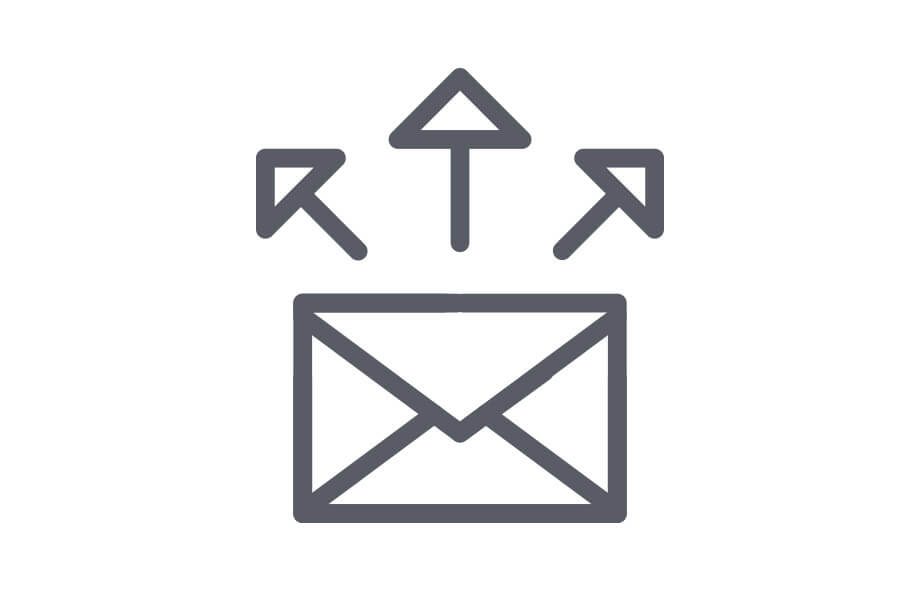Direct mail campaign planning, a guide to getting your campaign right.
Previously we’ve discussed why the time is right for direct mail, and how to organise your ideas into an effective brief. Now we’re getting into the detail of effective direct mail campaign planning.
Getting your direct mail campaign planning right involves three important stages:
• The mailing list
• The design
• The implementation
But remember, however well-crafted and in-tune your design and copy is, the message is wasted if it doesn’t reach the right people.
Direct response marketing specialist, Bob Bly, maintains that the right list will bring in 10 times the sales of a mediocre one. So don’t waste your opportunity. Once you’ve found the right targets, give them a clear message, structured creatively, to get the response you want.
1. Compile the right mailing list
Direct mail is a personal, tangible contact with the reader. It’s critical to tailor your campaign to your audience and vice versa. If you’re selling garden furniture and your reader lives in a tower block, not only have you wasted your efforts, you may have damaged your brand. Compiling a targeted list will mean your offer is seen by the right people, boosting your ROI and building brand awareness with your target customers.

You will already have worked on your audience persona as part of your campaign brief. The mailing list is where you put that demographic knowledge to use: you need to get your data in-line with your campaign objectives.
There are two ways to produce the optimal mailing list for your campaign. If you’re looking to generate orders, then your own list is the obvious choice: the response rate from existing customers and leads is usually far better than bought-in lists, as you’ve already established some relationship with them. Your list can be a useful tool for attracting new leads too: ‘recommend a friend’ and sharing incentives are a good tactic.
Clean data will save you money. You may have duplicate or incorrect information: nearly 7 million people move home in the UK every year, and Royal Mail amend around 500,000 addresses. Services can eliminate duplications, remove outdated data due to moves or bereavement and enhance records by adding missing elements such as postcodes. The charity Children With Cancer saved £48,000 across two campaigns after cleansing 1.7 million records.
A bought or rented list can be lucrative, especially if you’re looking to generate new leads. Agencies, trade associations and specialist industry magazines are all potential sources of data. Make sure you work with organisations that are members of the Direct Marketing Association to ensure you end up with high quality, legally compliant data.
2. Copy and design
Creating a convincing offer that people will respond to will be at the heart of your direct mail campaign planning.
While it’s true that print mail has the edge over email in capturing attention, a poorly written or badly presented mailing will give this advantage away within seconds.
Here are some must-haves in your copy to maximise interest and response rates:

Be personal
It might be tempting to save on the budget by addressing each envelope and letter with ‘Dear Homeowner’ or similar, but as soon as you do that you kill the benefit of one-to-one marketing (equally if you get the name wrong, you’ve lost the game – check your data!). And being personal goes beyond that – throughout your copy focus on what the reader cares about, not the brilliant things about you. As the adage goes: ‘Don’t tell me about your grass seed, tell me about my lawn.’
Remember: People do not buy things, they buy satisfaction of their want’s and needs.
A clear message
Put a call-to-action (CTA) message on the envelope.
Start your marketing pitch with a call to action the reader can’t ignore and will be ripping your letter open to get too.
Get your offer outlined quickly and simply.
Don’t make your reader work hard to find out what you want to tell them.
Use;
• Headlines
• Sub-headings
• Bullet lists
• Short paragraphs
• Break up the space to hold the reader’s attention.
Spell out the benefits. Benefits vs features is a hot topic in marketing, and the truth is you need to demonstrate both. Benefits are the way your reader will connect your offer to their lives: don’t fall into the trap of describing the spec of your kitchen units without conveying how they’ll create more storage space with their clever design.
Incentivise your offer: whether it’s bonus material, a discount, a gift, incentives give your reader more reasons to say yes. Recommend a friend offers are also a great list-building tactic.
Make your call to action clear and simple. You need to spell out exactly what you want your reader to do, how to do it, and by when. Make it easy for them to take action: include a clear weblink or QR code, phone number or reply slip (or all three) in your message. Ensure the layout highlights your call to action effectively.
Use a p.s. After the greeting and the headline, the p.s. is the most read section of your message. It’s powerful – use it! – We’ve seen this effectively used as a handwritten note at the end – this helps focus the reader right at the end when you need them to connect and take action.
3. Implementation
Coming up with the right format for your direct mail marketing campaign is a balancing act. On the one hand, it makes sense to use a memorable design to good effect – to try something new to stand out. On the other hand, you don’t want to detract from your message and the call to action. Deciding what’s best for you will depend on your campaign objectives, your target audience and your brief (including your budget!).

Sometimes, a simple letter is best for focussing attention. With this pared-down format, you can use a creative, modern typeset design with complimentary colour schemes to reinforce your brand while keeping attention on the words and message. Using striking or seasonal colours on your envelope or an image is a simple way to make an impact straightaway and get your customer to open the letter.
On the other hand, if you want to go beyond a letter, think about what format will capture your reader’s attention and trigger them to respond. You may need to include more in-depth material, such as a brochure, for example. (If you are thinking of creating a brochure our guide to calculating brochure weight for mailing is a great resource.)
And if you’re drawn to a more quirky campaign, here are some ideas to inspire you!
Whatever you decide, plan the timing of your mailing in line with your campaign objectives.
Send business mailings in advance of budget planning periods: at the end of the year and tax year.
For consumer mailings, match the timing to your offer: Fridays and Saturdays are great times to hear about leisure products.
Winter’s unlikely to be the best time to sell swimwear.
Once you’ve nailed your direct mail campaign planning, you’ll need to focus on getting the most out of it. Our guide to following up, embedding continuous improvement and increasing your ROI comes next.
